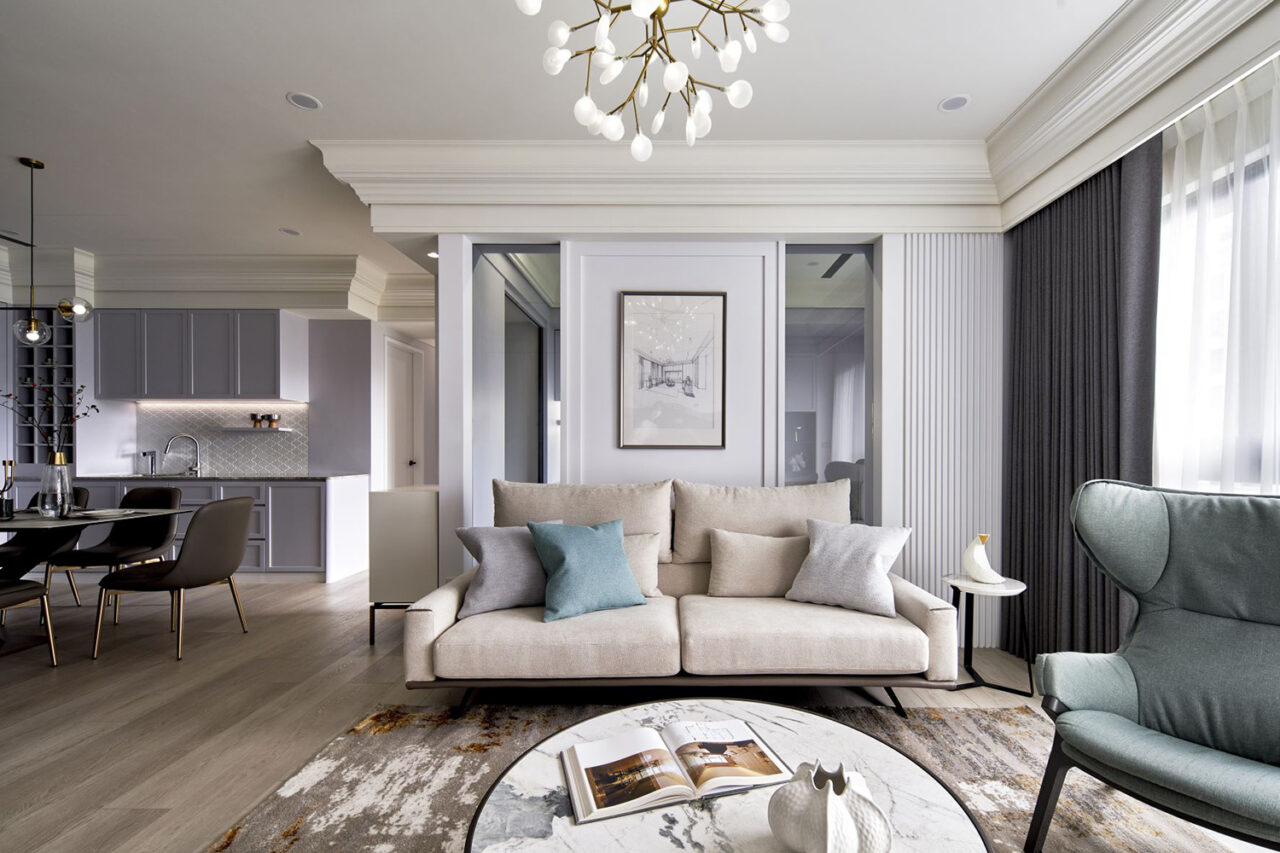Gold Winner of the International Architecture & Design Awards 2023
Architect / Designer:
WU CHUN CHIAO
Studio:
National Taipei University of Technology
Design Team:
Shao Wen Cheng
Copyright:
kaying photo studio
Country:
Taiwan
This project is a new single-story residential plan with an actual interior area of approximately 105 square meters.
Although the public area in the original layout is spacious, the door is directly facing the balcony and it is unclear if the entrance is inside or outside. In addition, there is an imbalance in the ratio of living room and dining room, and the configuration of the private areas such as the master’s bedroom and guest bathroom is also unreasonable. Given the foregoing facts, in the early stages of planning, priority is given to reviewing the functional units and humanizing the moving lines based on the practical needs of the client, such as the entrance, living room, dining room with a long light meal counter and multi-functional study in the public area. Through the repositioning and re-division, each area has a sense of independence and intimacy that allows for dialogue at all times. The combination of the twin themes of release and moderation, together with the elegant New American style that the homeowner loves, the soft fog color and the soft furnishings throughout the house, deeply give the house a ritualistic and pure beauty that ingratiates all the five senses.
High cabinets on the two sides of the entrance, together with a virtual and real view of the grille in front, take care of the requirements for storage, feng shui barrier and moving lines. The dining room, multi-functional study and master’s bedroom are painted in pink and violet, with a consistent design style. The dining and kitchen are separated by glass sliding doors, allowing for the flow of light in the morning and evening and the movement of people, in harmony with the symmetrical windows in the entrance of the study and the back wall of the sofa. The dining room makes good use of the retreated wall line of the guest bathroom to add a row of preparation counter with sink and upper and lower cabinets, greatly enhancing the dining atmosphere and functional flexibility.
In the master’s bedroom, the original closed dressing room has been converted into a more useful and streamlined high-cabinet combination. Under the premise of simultaneous upgrading of function, beauty and comfort, not only the original problems of disturbance of moving lines and feng shui concerns are resolved, but also the space between entry and exit is obviously more fluent. In addition, the digital living intelligence system is seamlessly introduced in the living room, dining room and entrance, integrating such essential equipment as air conditioning, curtain, lighting and audio-video system, leading users to enjoy a rich and colorful life in different settings.
National Taipei University of Technology
National Taipei University of Technology (NTUT) is a public university in Taipei, Taiwan. It is a member of the Global Research and Industry Alliance (Gloria) of the Ministry of Science and Technology and is accredited by AACSB. The school is located in Daan District, Taipei City. It was founded in 1912. It was formerly known as an industrial education school and is one of the earliest secondary higher education institutions in Taiwan.



